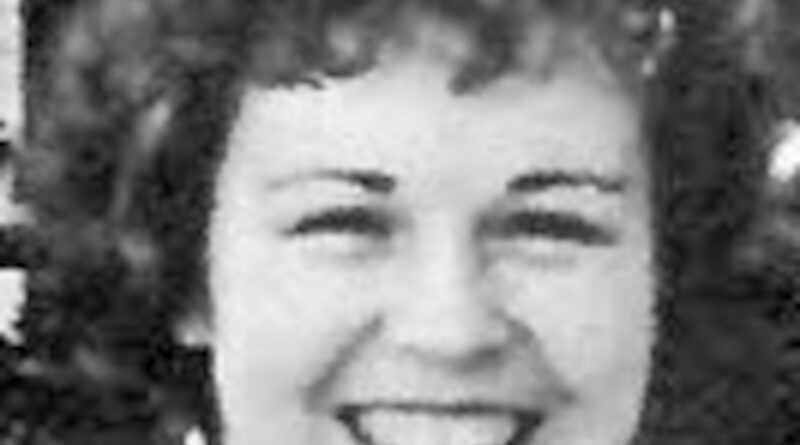The Disappearance of Dolores Mae Siddall in Long Beach California
Dolores Mae Siddall’s disappearance on August 23, 1961, remains one of Long Beach, California’s most enduring and tragic mysteries. Known for her grace and dedication to her family, Dolores’s sudden vanishing, her connection to an illegal medical procedure, and the events surrounding her case have left a haunting legacy. This article delves deep into the details of her life, the circumstances of her disappearance, the investigation, and its aftermath.
Dolores’s Early Life and Background
Dolores Mae Siddall was born on February 17, 1932, in Alva, Oklahoma, and her family relocated to Long Beach, California, during her childhood. By the age of nine, Dolores had settled into life in Long Beach, where she was admired for her vibrant personality and athletic pursuits. She became known for her success in roller skating competitions, earning awards that showcased her talent and dedication.
In 1952, Dolores married Eugene Siddall, and the couple had one daughter before their marriage ended in 1956. After the divorce, Dolores went on to have two more children, raising them as a single mother. To support her family, she took on various jobs, including working as a barmaid and assisting in her father’s cafe. This time period was marked by resilience as Dolores balanced the challenges of single parenthood and maintaining a stable income.
Her life, however, was not without difficulty. By August 1961, she found herself facing an unexpected pregnancy. Faced with a dilemma and fearing the stigma and financial strain that another child would bring, Dolores made a decision that would tragically alter the course of her life.
The Fateful Day of August 23, 1961
On August 23, 1961, Dolores arranged for a babysitter to care for her children and left her residence in Long Beach, intending to undergo an illegal abortion. Before leaving, she mentioned her plan to several friends, revealing that she had reached out to a man named Hugh MacLeod Pheaster, an individual with a reputation for performing illegal medical procedures. Dolores’s financial struggles were evident, and she had reportedly borrowed $100 from a friend to cover the cost of the procedure.
Dolores was last seen wearing a long black knit coat, a black sheath dress, and black high heels. This day marked the last time anyone would hear from her, and she did not return home that night. As the hours passed, concern grew, and the babysitter eventually contacted the police, launching an investigation that would quickly lead to one of the most notorious trials in California’s history.
The Investigation and Arrests
The police quickly honed in on Hugh MacLeod Pheaster, a self-taught “surgeon” with a dark past. Known as “Mack the Knife,” Pheaster was involved in a clandestine network that performed illegal medical procedures. During the investigation, witnesses recalled hearing disturbing sounds coming from Pheaster’s apartment, with a neighbor testifying to hearing a woman in distress, possibly Dolores. The woman testified that she heard cries and the sound of something heavy being dragged, describing an eerie silence that followed.
Authorities soon organized a sting operation to arrest Pheaster, who was found with surgical instruments and a syringe in a Long Beach motel room. He was arrested, along with several other individuals allegedly involved in the operation, including Conrad Couch, a junior high school teacher, and Thomas Ciccarelli, who was believed to have coordinated the illegal surgeries.
Although circumstantial evidence pointed toward Dolores’s tragic fate, her body was never found. This absence of physical evidence made it challenging for the prosecution to build a conclusive case, as defense attorneys argued that Dolores could still be alive, perhaps having decided to leave her life behind.
The Legal Battle and Confession
Despite the lack of a body, Pheaster was brought to trial in 1962, facing charges of illegal medical procedures and murder. Witnesses testified about other women who had undergone procedures at his apartment, describing disturbing details that painted a grim picture of Pheaster’s operation. However, the jury ultimately acquitted him of Dolores’s murder, leaving her family and the public with unresolved questions.
Following his acquittal, Pheaster was convicted of similar charges in other cases, as well as federal charges related to armed robbery and auto theft. Later, in a shocking twist, Pheaster confessed to having performed the abortion that led to Dolores’s death. He claimed she had developed complications, and despite his efforts to save her, she passed away. He said he placed her body in the trunk of his car and later disposed of it in a ravine near Lake Arrowhead in San Bernardino County.
A polygraph test indicated he was truthful about this statement, and investigators conducted extensive searches in the area. Despite their efforts, Dolores’s body was never recovered, leaving her family and authorities without closure.
The Ripple Effect on Dolores’s Family
For Dolores’s family, her disappearance was more than just a public mystery—it was a deeply personal tragedy. Her children, especially her eldest son, reportedly spent years grappling with unanswered questions and searching for the truth about what happened to their mother. The trauma of losing their mother under such circumstances affected each of them profoundly, shaping their lives in ways that outsiders could hardly understand.
Over the years, her story became emblematic of the dangers that women faced in seeking underground medical procedures due to restrictive laws. Dolores’s case has served as a painful reminder of the vulnerability that individuals, especially women, faced when they had limited legal options and resources.
The Unresolved Legacy of Dolores Mae Siddall’s Disappearance
Though decades have passed since Dolores’s disappearance, her case remains an open wound in the history of Long Beach. The unresolved nature of her disappearance, combined with Pheaster’s later involvement in other criminal activities, has left an enduring mystery. In 1974, Pheaster participated in the kidnapping of a millionaire’s son, further tarnishing his legacy and adding to the heinous crimes associated with his name. He eventually died in 2011, taking any remaining secrets about Dolores’s disappearance with him.
For the authorities and Dolores’s family, the hope remains that her body might one day be found. Dolores Mae Siddall’s disappearance continues to haunt Long Beach and remains a powerful reminder of a time when desperate measures were the only options available to many women. Her story speaks to the perils of hidden medical practices and the shadowy underworld that exploited people’s vulnerability.
Conclusion
Dolores Mae Siddall’s case, though decades old, is still active. Authorities, along with her family, encourage anyone with information that might lead to the discovery of her remains or offer new insights into her case to come forward. The Long Beach Police Department continues to keep her case open, hoping that someone may yet provide the missing pieces to solve this tragic mystery.
Discover more from City Towner
Subscribe to get the latest posts sent to your email.




